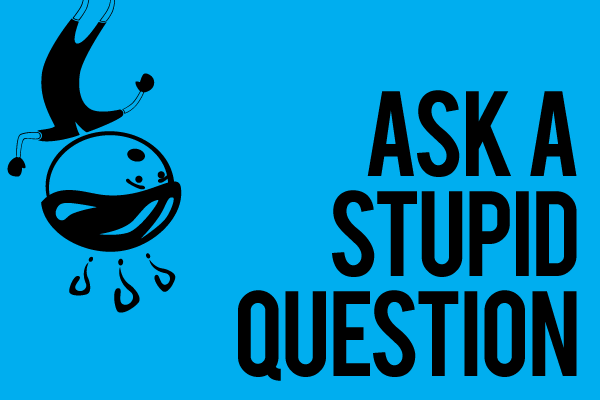We know, there’s no such thing as a stupid question. But there are definitely some questions too embarrassing to ask your local shop or riding buddies. This is the first in a weekly installment where we get to the bottom of your questions – serious or otherwise.
This week starts off with a question about dry lube from Zooey – Is “dry” lube okay for cold and wet winters, considering that dry means a “solid film lubricant” like PTFE/teflon, as opposed to an oil-based one? Isn’t PTFE water resistant and wouldn’t it keep things from sticking to the drivetrain better? Don’t liquid lubes get thicker in the cold?
To find the answer, we shot the question over to the crew at Finish Line/White Lightning, whose response is after the break…
From Finish Line/White Lightning – Dry style lubes are absolutely fine for cold weather and a little rain. PTFE is water resistant but dry lubes are made up of more than just PTFE. The reason wet style lubricants work better for cold and rainy/wet winters is because the petroleum base does a better job repelling water, most like Finish Line WET Lube also have rust/corrosion inhibitors in them that protect your chain from all of the water, snow, and salt that is put on roads during the winter. Dry style lubes do a better job not accumulating dust, dirt, and sand. Wet style lubes better protect your chain from the elements, especially rain, snow and salt. Just remember to clean regularly to keep your chain from getting overly dirty.
David has a follow-up to the BSA question – Can you explain what the BSA30 is and the specific problem it solves. I understand that this is a fairly new option.
BSA30 is a bottom bracket that fits in a standard BSA threaded frame, but allows for the use of a 30mm crank spindle. Until the BSA30 came around, the biggest spindle that would fit in a threaded bottom bracket was a 24mm spindle from one of the many companies who make them (SRAM, Shimano, Campy, etc.). I’m not sure who first created a threaded bottom bracket for a 30mm spindle (UPDATE: According to Jason Quade, it was the Zipp Vuma Quad BB that was first), but one of the first that I had was for an e*thirteen crankset. Since then brands like Race Face, Rotor, and others have moved to the design which provides benefits in that a larger spindle can be used for increased stiffness while maintaining a threaded bottom bracket. Bigger spindles also require bigger bearings, so in many case the smaller 6805 found in standard outboard bearing BSA bottom brackets gets replaced with a 6806 for the BSA30 bottom brackets. BSA30 is interchangeable with BSA as far as the frame is concerned, but the bottom brackets are specific to each spindle size. So if you have a bike with a standard BSA bottom bracket at the moment, you could upgrade to a BSA30 if you replace both the bottom bracket and the crankset.
John wants to know – What do I need to know about bottom brackets when it comes to the new subcompact chainrings like 46/30 or 48/32 and what are the compatibility issues?
Generally, chainring selection has nothing to do with your bottom bracket and everything to do with your crankset. Most often, subcompact rings require smaller Bolt Circle Diameter, or the measure of the mounting points for your chainrings on your crank. These days there are a number of cranks that are starting to use replaceable spider systems that make it possible to switch from a standard double, to compact, to subcompact without changing your crank arms. If you don’t have one of those cranks like the Easton EC90SL, depending on what crank you have you will likely need to replace the entire crankset. In that case you will just need to match the new crankset to the current bottom bracket you’re running. There are a few exceptions like that Easton EC90SL crank uses a BSA30 bottom bracket which can fit a standard BSA frame as mentioned above, and there are all sorts of adapters depending on the crank and the bottom bracket your frame has. But in general, regardless of the bottom bracket your bike has, it shouldn’t have an effect on being able to run subcompact rings as long as you select the right crank for the job.
Got a question of your own? Click here to use the AASQ form, or find the link under the Contact menu header up top anytime a question pops into your mind!
